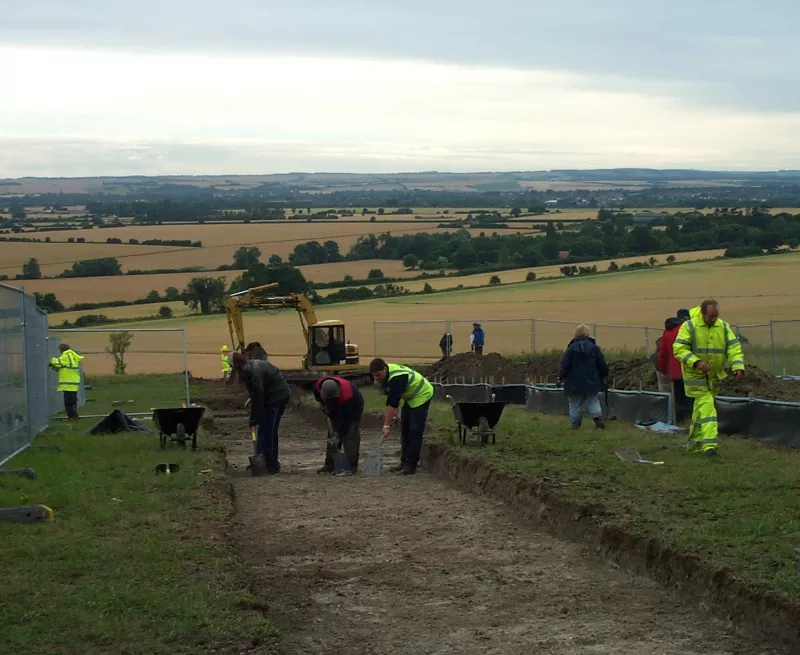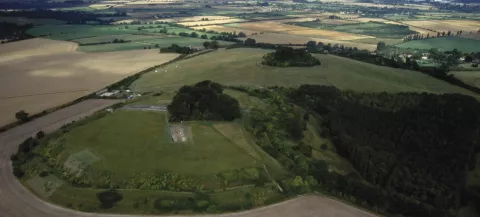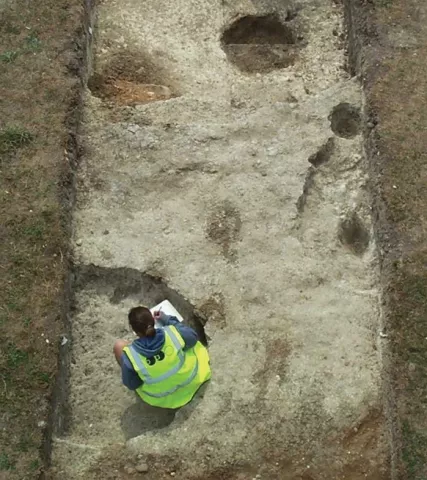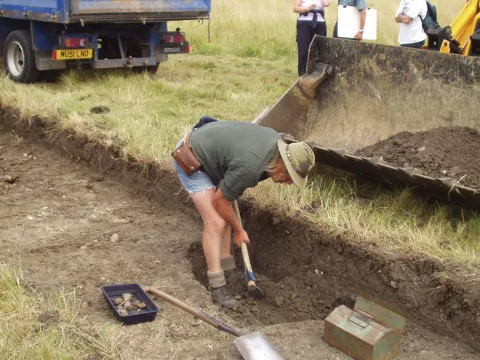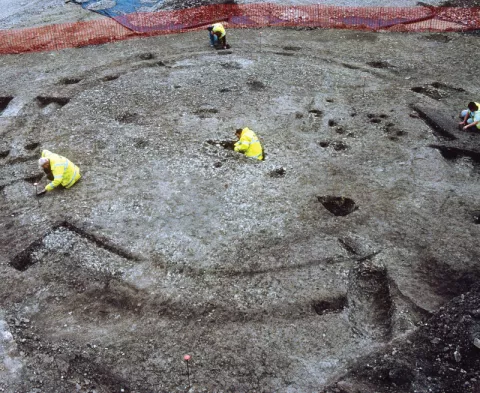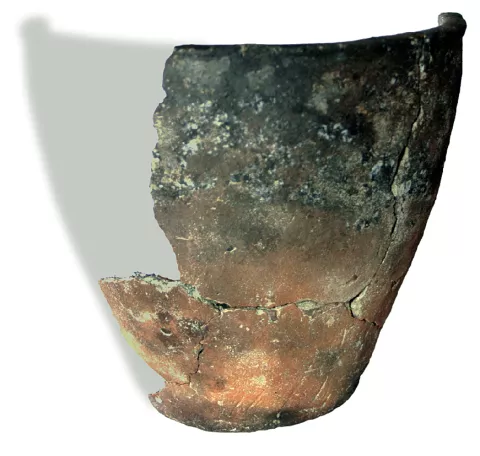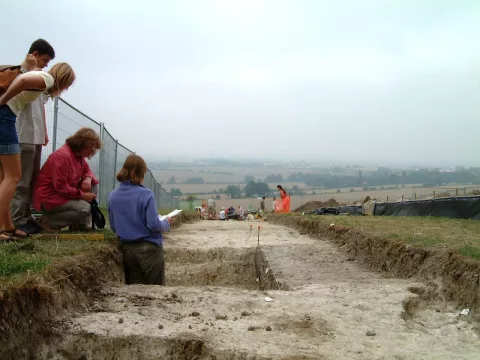Hillforts are one of the most recognisable archaeological features in the landscape, with their ramparts and ditches on hilltops in the countryside. There are over 4,000 confirmed hillforts in the UK and the Republic of Ireland, which have become symbols of the Iron Age in the British Isles and Ireland. They were used for different purposes by the communities who built them -defence, trade, social gatherings, settlement. Even after decades of investigations, they remain one of the most fascinating sites from Prehistory.
The hillfort on Castle Hill, Little Wittenham, is a fascinating example of this type of monument. Thanks to its prominent position in the landscape of South Oxfordshire, together with its twin Round Hill, it has been a focus of human activity for the past 3,000 years. The Earth Trust, located near it, obtained funding from the Heritage Lottery to carry out a study of landscape change in Oxfordshire. Between 2002 and 2006, Oxford Archaeology led a programme of survey and excavations at Castle Hill and surroundings as part of this project. This was an exemplary team effort, with the involvement of the local community, several universities, and even Time Team. Here we reveal the fascinating story of this area.
Moments and finds from an iconic project
Bronze Age origins
The existence of the Caste Hill hillfort has been known for a long time, with its ramparts still very visible, despite centuries of ploughing. In the 1920s, a local archaeology enthusiast named Harry Watts got curious about the hillfort and undertook some excavations, during which he found funerary urns and sherds of Roman pottery. It was only during the excavations led by Oxford Archaeology that the origins of the hillfort were uncovered, when a Late Bronze Age (1200-800 BC) enclosure was identified on the hilltop.
The enclosure was subcircular and about 100m wide, with deep ditches and a bank that might have been built for defence. At the time of its construction, the top of the hill was still covered in trees (as seen from snail remains and pollen in the soil showed). This, together with the presence of the higher Round Hill to its west, means that the enclosure could only be seen -and had good views- to the south, where a contemporary settlement was situated. No firm evidence for settlement or industry was found inside the enclosure, so its purpose is unclear. A strong possibility is that Castle Hill could have been used either as a gathering place at specific times of the year or to provide shelter and protection in times of danger for the nearby communities.
The hillfort as is visible today was built in the Early Iron Age (800-300 BC) and the trees on the hill were cleared, making it a very visible and striking sight from many miles around. Pieces of Early Iron Age pottery that were found by archaeologists and volunteers at the bottom of the hillfort ditch confirm the date of the construction; the distinctive layers that were then accumulated in the ditch show that the ditches and ramparts were well-maintained and regularly cleaned for centuries, well into the Middle Iron Age.
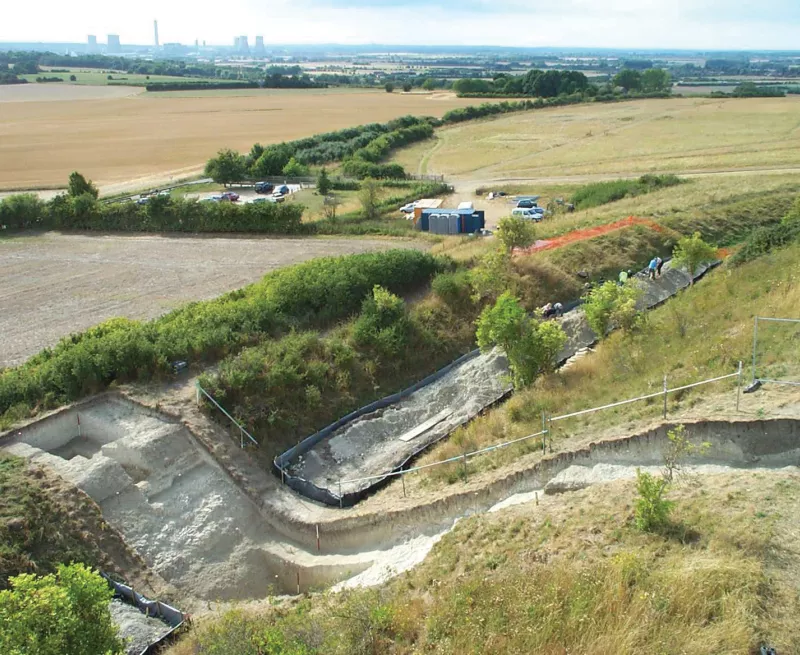
What was the hillfort for?
Despite the excavations, the exact purpose of the hillfort is not certain. No evidence of conflict was found at the site and the fortifications, while certainly imposing, seem to have been more a way to show off the presence and status of the hillfort's builders than serve as shelter in case of attack. There are no clear signs of domestic occupation from the interior, but this project revealed a settlement linked to the hillfort just at the foot of the hill, something unique in the Thames Valley. The excavations also revealed a very interesting, over 3 metre wide and relatively shallow pit inside the hillfort, dating to the Early Iron Age. This is not unusual: pits of varying depths and fills are a very common find at many hillforts; the research to date has shown that some pits were used to store grains, while others were used for special deposition of various materials.
The pit at Castle Hill was rather outstanding because of its fill: contained 12 kg of pottery, 12 kg of animal bone, worked bone objects, a sling bullet, and charred remains of wheat, barley, oats. Some of the fill could be waste from an event or gathering (the quantities of pottery and animal bone are too large for ordinary domestic refuse and were consumed and disposed of in a very short time), but one particular find stands out: the complete skeleton of a raven must have been intentionally deposited in the pit and had some significance that is unfortunately lost to us.
13 shallow, bowl-shaped pits from the Middle Iron Age (300-100 BC) show that the interior of the hillfort was used more intensively. Most pits had small quantities of pottery and animal bone, while six had human remains in them, both types being quite common for this period. One pit, however, stands out as it contained remains from three individuals, deposited at different times, one on top of the other. The only similar example comes from the famous Danebury hillfort, in Hampshire.
While more research is needed to fully understand the role of the hillfort, it was clearly that the inhabitants of the settlement below it dedicated to specific uses: gatherings, special deposits, and burials.
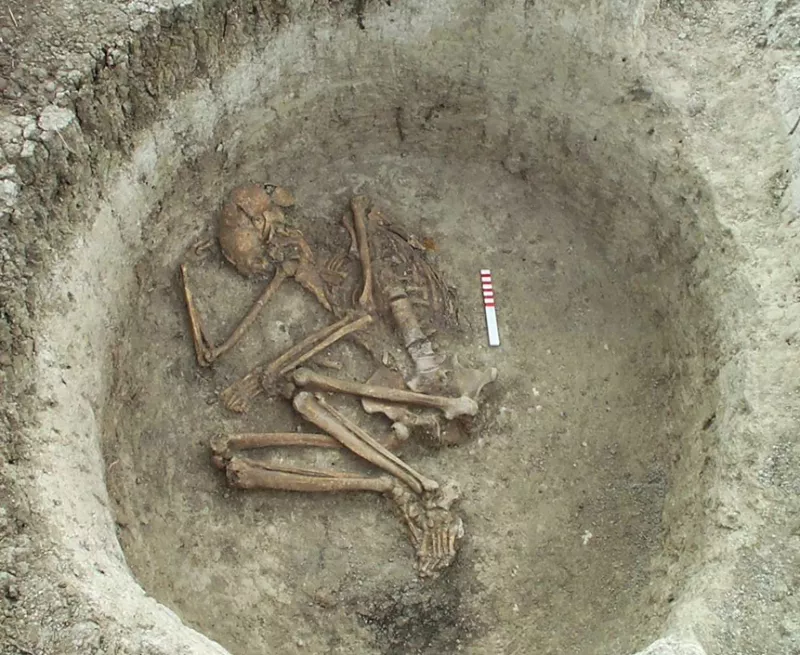
From activity hub to local landmark
Deep social and economic changes during the Late Iron Age are reflected in the evidence from Castle Hill. As trade contact increased between the Roman world and England (and beyond), hillforts were abandoned in favour of low-lying places in strategic positions, for example by rivers, where larger settlements and trade or industrial centres -called oppida- developed. The centre of activity in the area moved from Castle Hill to the riverside settlement (as yet unexcavated) at the Dyke Hills, near Dorchester-on-Thames, within sight of the old hillfort and its twin hill. The hillfort was still used as a place of burial, continuing with the Middle Iron Age tradition, but the ditches and ramparts were no longer maintained.
Following the Roman conquest in 43 AD, the hillfort found a new purpose. As Dorchester-on-Thames became a thriving Roman town and administrartive seat, the excavations revealed evidence for domestic activity and even possible cisterns to collect water. However, there were no fancy Roman brick or stone buildings on Castle Hill, but rather ordinary homes for farmers linked to the town. The hillfort was abandoned again towards the end of the 3rd century AD.
The uncertain times at the end of and after Roman rule in Britain made hillforts into very appealing places to live and bury the dead again. Castle Hill was no exception: some burials and what looks like a restoration of the ramparts took place in this period, but not necessarily as protection against Anglo-Saxon newcomers. In fact, there was an Anglo-Saxon presence in the area around Castle Hill, particularly at Dorchester-on-Thames, at the very end of the Roman period, perhaps when mercenary troops were invited to settle there. During the Anglo-Saxon period, there wasn't much activity on Castle Hill, as finds of only a few pottery fragments suggest. It seems that for most of the period, villages, cemeteries, field systems, and even high status centres were established in the surrounding area, always within sight of the hillfort and its twin Round Hill.
